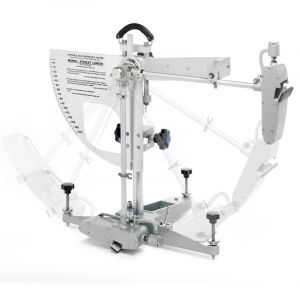During the late 1950s the Portable Skid Resistance Tester was adopted and refined by the Transport Research Laboratory (TRL, then known as the Road Research Laboratory) for use on roads. Through effective identification of areas of road with a high skid risk, the Portable Skid Resistance Tester is still recognised today as an important tool in the quest to improve road safety. Our Portable Skid Resistance Tester is regularly used by local councils, highway laboratories, tyre manufactures and road materials manufacturers to test the frictional resistance of existing roads, new roads and road markings.
Assessing Roads using the Portable Skid Resistance Tester
When using the Portable Skid Resistance Tester to assess the skid potential of a road surface, the following special considerations should be made:
- Set the Tester on the road surface so that the Rubber Slider swings in the direction of the traffic
- Condition the slider by swinging it five times across the dry road surface
- On surfaces bearing a regular pattern such as ridged or brushed concrete, tests should be made with the conditioned Rubber Slider operating at 80° to the ridges.
- The slipperiness of some roads varies considerably across the width of the road and sometimes the crown of the road is the most slippery part. Where this is suspected, tests should also be made on the crown of the road.
- Gradients. The Tester is capable of performing tests on steep gradients and in the presence of crossfall. On gradients, the above procedure is followed and, although the sliding length is slightly displaced from the central position, there is no change in the load between Rubber Slider and test surface and no appreciable change in the speed of sliding. Therefore, the instrument operates correctly whether tests are performed uphill or downhill. Sufficient levelling adjustment is available for testing on gradients of up to I in 10 (5.7°). Inserting a spacer under one screw allows the Tester to be used on steeper gradients.
Take the mean of five readings at each of five locations in the test track (usually the near side wheel-track) spaced at approximately 5 to 10 metre intervals along the length under test. The mean of these readings gives a representative value of the skidding resistance of the road.
Factors Affecting Results
Like all skidding machines, the Portable Skid Resistance Tester can only be used to the best advantage with a full knowledge of the factors influencing skidding resistance, and results must be interpreted with due consideration for all conditions obtained at the time of the tests.
The measurement obtained by the Portable Skid Resistance Tester has been termed ‘Skid Resistance’. It is intended to correlate with the performance of a vehicle having patterned tyres, braking with locked wheels, on a wet road at 50 Km/hr.
The order of merit of road surfaces can change substantially between 50 and 130 Km/hr. Thus, Skid Resistance values, which represent the 50 Km/hr value, cannot alone be expected to give an indication of high-speed performance.
Using the portable skid resistance tester to measure polished stone value
Measurement of PSV is carried out in two stages. First a sample must be prepared using an Accelerated Polishing Machine. Second, measurement of their state of polish using a Portable Skid Resistance Tester.
The higher the PSV value, the more resistant the aggregate is to polishing.
The precise procedure varies according to which international standard is to be followed. Refer to these for more details.




